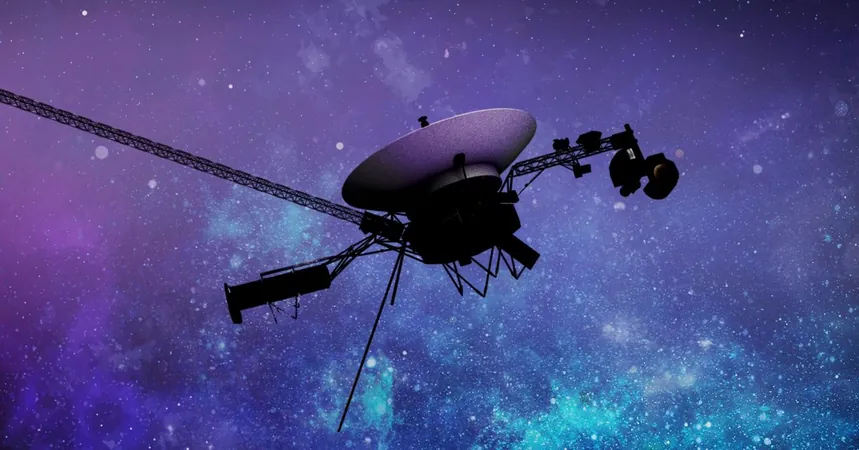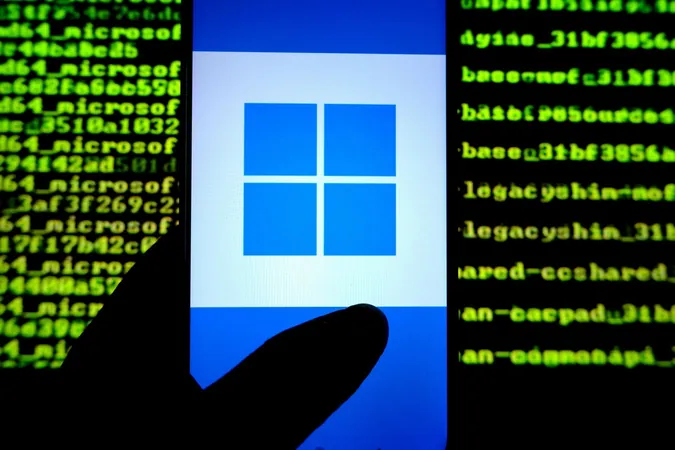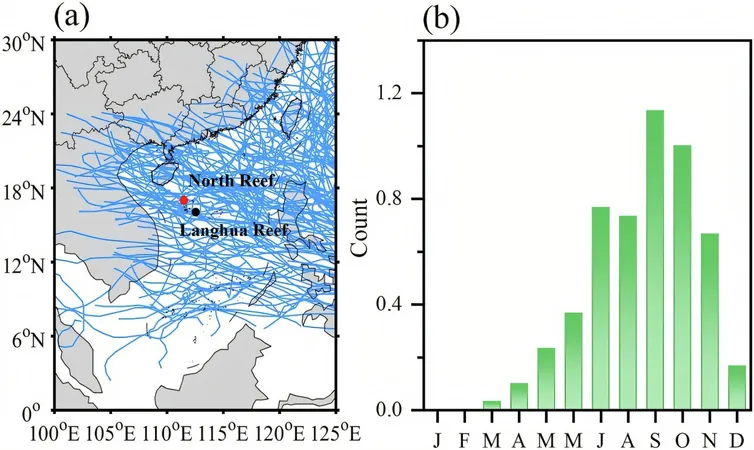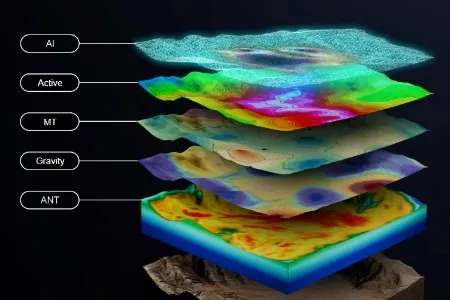
Voyager 1: Spacecraft Shifts to 40-Year-Old Backup Transmitter After Communication Glitch
2024-11-02
Author: Charlotte
NASA's Historic Voyager 1 Operates on Backup Transmitter
NASA has announced that its historic Voyager 1 spacecraft has been switched to a lower-powered backup transmitter—a contingency it hasn't utilized in over 40 years—after the notorious fault protection system was activated. This unexpected switch comes as the mission team investigates the cause behind a loss of communication with the spacecraft.
Communication Resumption and Initial Issues
On October 24, NASA’s Voyager 1 team successfully reestablished contact with the spacecraft following a brief but concerning interruption in signal transmission. This communication lapse appears to be attributed to the spacecraft’s fault protection system, a critical safety mechanism designed to shut down non-essential functions in the event of an anomaly, allowing the device to relay crucial information back to Earth.
Incident Timeline and Fault Protection Activation
The trouble began on October 16, when engineers instructed Voyager 1 to activate a heater. Although it was anticipated that the spacecraft would manage this task without dwindling its power supply, an unforeseen issue activated the fault protection system. The flight team remained unaware of the problem until no signal was received from Voyager 1 on October 18 via NASA's Deep Space Network.
Communication Challenges and Transmitter Switch
With ingenuity fitting a 46-year-old mission, the team deduced that the fault protection system had reduced power supply, altering the frequency of the primary X-band transmitter. They were ultimately able to locate Voyager 1 by searching for the new transmitted frequency. However, this was only the beginning of a string of communication hurdles.
Following the initial connection on October 24, another outage occurred shortly after, as it was believed that the fault protection system triggered twice more, which resulted in the shutdown of the X-band transmitter entirely. In an impressive, though troubling pivot, Voyager 1 switched over to the much weaker secondary S-band transmitter, one it has not employed since 1981—43 years ago!
Voyager 1: The Most Distant Human-Made Object
Currently hurtling through interstellar space at an astounding speed of over 38,000 miles per hour, Voyager 1 stands as the most distant human-made object from Earth. Launched in 1977 during an extraordinary planetary alignment, it completed a remarkable journey through the solar system, visiting both Jupiter and Saturn. Today, its mission has transitioned to exploring the outer boundaries of our Sun and beyond.
Resilience of Voyager 1's Systems
Imagining the resilience of Voyager 1, it’s remarkable that the S-band transmitter is still functioning after decades of dormancy. NASA’s teams managed to detect its faint signals, but for operational safety, the flight controllers have decided to stick with the S-band transmitter until they can pinpoint the precise cause of the triggering fault protection system.
Ongoing Challenges and Future of Voyager 1
Earlier in 2023, Voyager 1 faced a separate communication hiccup when a hardware failure led to nonsensical data being transmitted back to Earth, showcasing the challenges faced by the aging spacecraft.
As Voyager 1 ages, more faults are likely to present themselves, leading to concerns about its longevity. Engineers are actively and diligently working to resolve the current issues while maintaining hope that this pioneering spacecraft can continue sending valuable data from the frontiers of our solar system for years to come. However, with communication times hovering around two days in each direction, it could take weeks before the team fully understands what has gone awry.
Conclusion: The Continuing Journey of Voyager 1
As we remain captivated by the endless mysteries of the cosmos, will Voyager 1 conquer yet another hurdle and continue its extraordinary journey into the unknown? Stay tuned!









 Brasil (PT)
Brasil (PT)
 Canada (EN)
Canada (EN)
 Chile (ES)
Chile (ES)
 Česko (CS)
Česko (CS)
 대한민국 (KO)
대한민국 (KO)
 España (ES)
España (ES)
 France (FR)
France (FR)
 Hong Kong (EN)
Hong Kong (EN)
 Italia (IT)
Italia (IT)
 日本 (JA)
日本 (JA)
 Magyarország (HU)
Magyarország (HU)
 Norge (NO)
Norge (NO)
 Polska (PL)
Polska (PL)
 Schweiz (DE)
Schweiz (DE)
 Singapore (EN)
Singapore (EN)
 Sverige (SV)
Sverige (SV)
 Suomi (FI)
Suomi (FI)
 Türkiye (TR)
Türkiye (TR)
 الإمارات العربية المتحدة (AR)
الإمارات العربية المتحدة (AR)